As they say, “April-showers bring May-flowers.” Planning ahead is important to build and maintain a garden that will have flowers blooming throughout the year. A low-maintenance rain garden is a great landscape feature that can beautify your property, as well as provide improved drainage and local cooling during hot and stormy summers.
When built properly, rain gardens are long-lasting and can help reduce flooding by holding on to excess rainwater and slowly releasing it over time. Picking the right rain garden plants is important for this purpose. Choosing your plants carefully also allows you to select flowers based on their bloom-cycle, ensuring a beautiful yard throughout the year and creating a lovely home for native pollinators such as bees and birds!
Here are a few of our favourite plants native to North America that bear spring flowers.
Blue Flag Iris
Iris versicolor
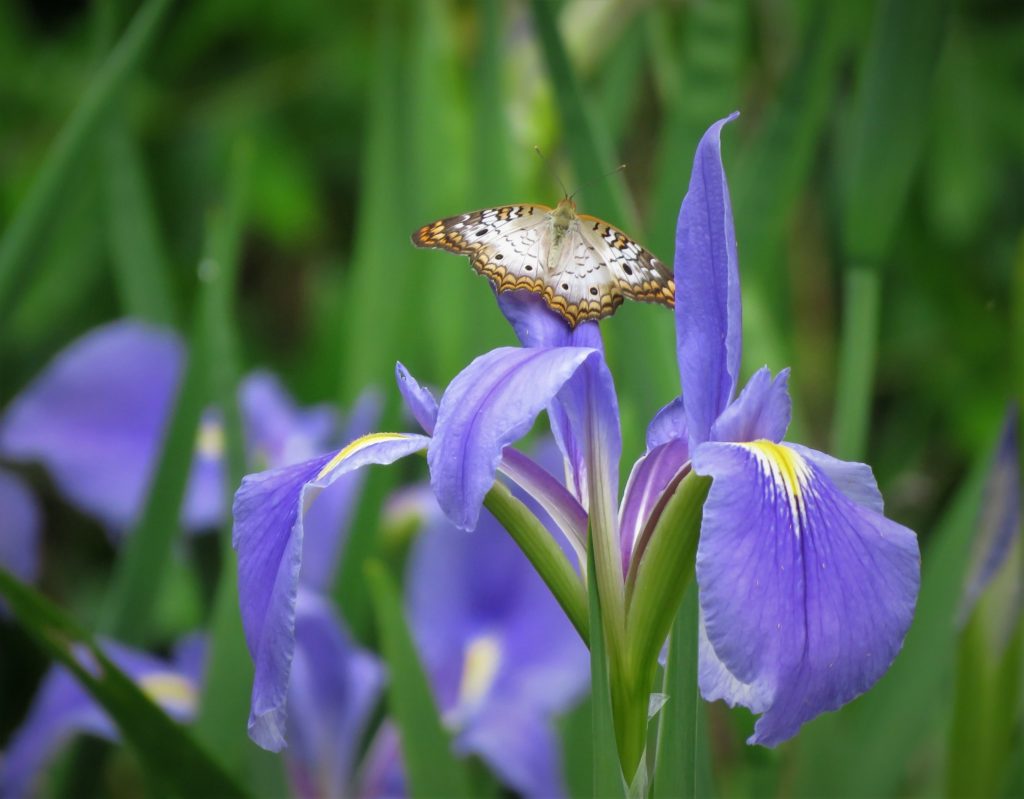
Range: A true-blue native to eastern North America.
Season: These flowers blooms in spring and lasts all summer!
Type: Easy-growing perennial forb. 2-3′ height and spread.
Sun: Prefers full sun but tolerates partial sun.
Soil: Prefers wet acidic soils but tolerates short periods of drought and seasonal flooding.
Symbionts: Supports hummingbirds. Resistant to deer and rabbit nibbles. Toxic, inedible.
Uses: Good for improving water quality as it absorbs excess nutrients.
Fun Facts: It is the provincial flower of Quebec and is related to the fleur-de-lis (yellow flag iris) used in French heraldry.
Siberian Iris
Iris sibirica

Range: A naturalised non-native iris from temperate regions of western and central Eurasia.
Season: These flowers bloom from early spring to late summer.
Type: Perennial, herbaceous.
Sun: Grows well in full-sun or part-sun.
Soil: Prefers moist and slightly acidic soil but is drought-hardy and tolerates seasonal flooding.
Symbionts: Rabbit and deer resistant. Toxic to humans, inedible.
Uses: Great candidate for mass-planting.
Fun Facts:
The flowers were used by the Tatar culture in central Asia to create a yellow dye for cloth. Available in blue, indigo, violet, purple, magenta, and burgundy.
Eastern Ninebark (Common Ninebark)
Physocarpus opulifolius

Range: Native to eastern North America.
Season: Clouds of small white flowers appear in May and last up to June. Provides four seasons of interest in the form of berries and foliage.
Type: This deciduous perennial shrub can grow up to 3-metres tall and 2-metres wide.
Sun: Grows well in many conditions: from full sun to part shade.
Soil: Moist to dry, claggy gravelly substrate, and acidic to alkaline soils. Flood and drought tolerant. Symbionts:
Provides nesting sites and cover for birds and winter food in the form of seeds. Larval host for the white spring moth (Lomographa vestaliata) and the blinded sphinx moth (Paonias excaecatus). Deer-resistant.
Uses: Used for erosion-control on streambanks due to its hardiness in harsh conditions.
Fun Facts: Also comes in different foliage colours. There is also a ninebark native to western North America, the Pacific ninebark (P. capitatus), used for ecological restoration as it outcompetes invasive species.
Goatsbeard (Bride’s Feathers)
Aruncus dioicus
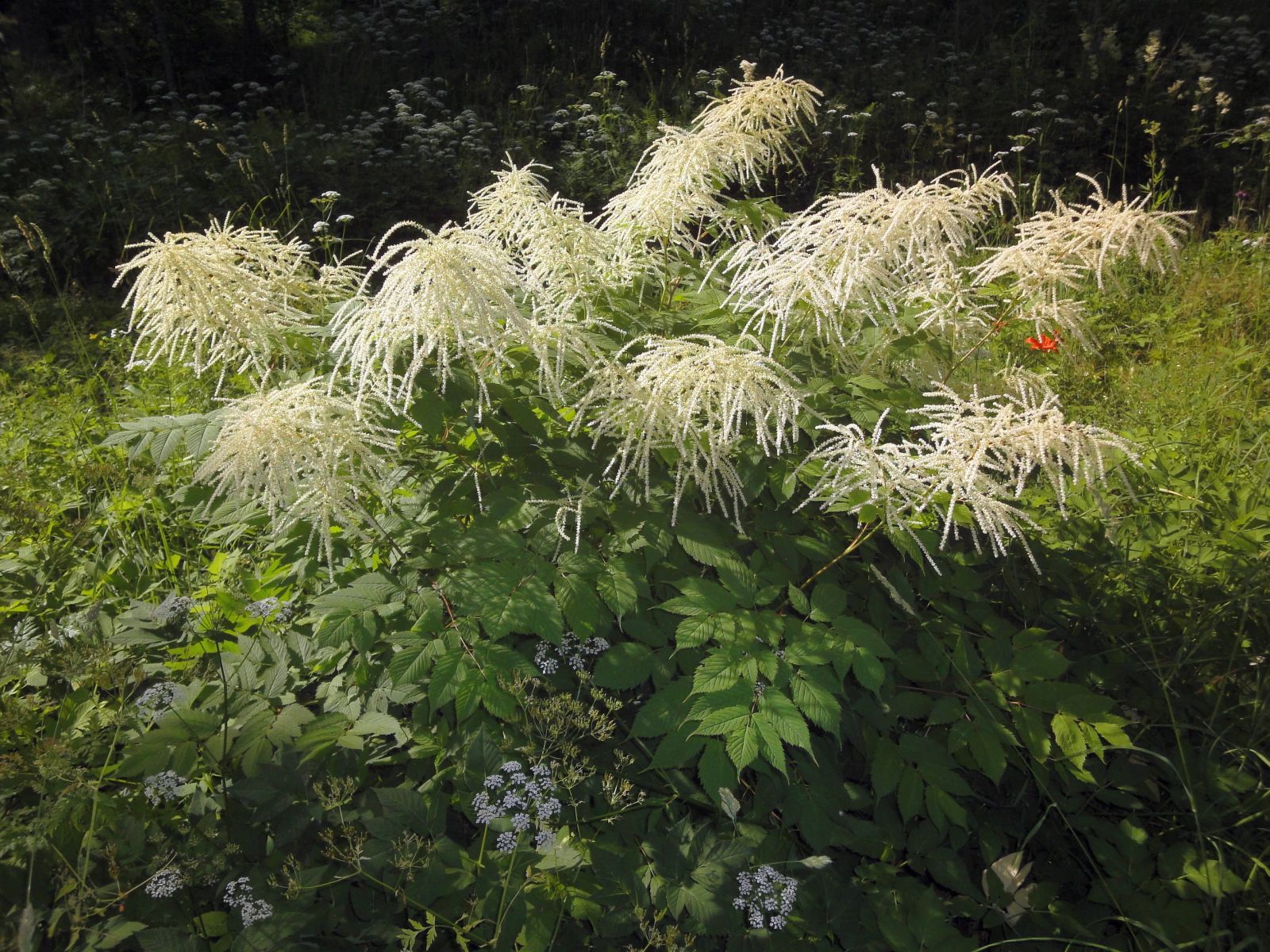
Range: Native to the northern hemisphere.
Season: White or cream flowers appear throughout May and June.
Type: This perennial shrub can grow up to approximately 2-metres tall and wide.
Sun: Grows well in many conditions: from full sun to part shade.
Soil: Prefers moist soil but can withstand flood and drought conditions. Prefers loamy soil with a neutral pH but can tolerate sandy or claggy soils with some acidity or alkalinity.
Symbionts: Larval host for the Dusky Azure butterfly (Celastrina nigra).
Uses: Its feathery plumes make great cut-flowers.
Fun Facts: Its species-name tells us that it is dioecious, meaning there are separate male and female plants. Can be propagated from cuttings. Its young shoots are eaten in Italy as a wild green and boiled or used in soups.
Prairie Smoke (Old Man’s Whiskers)
Geum triflorum
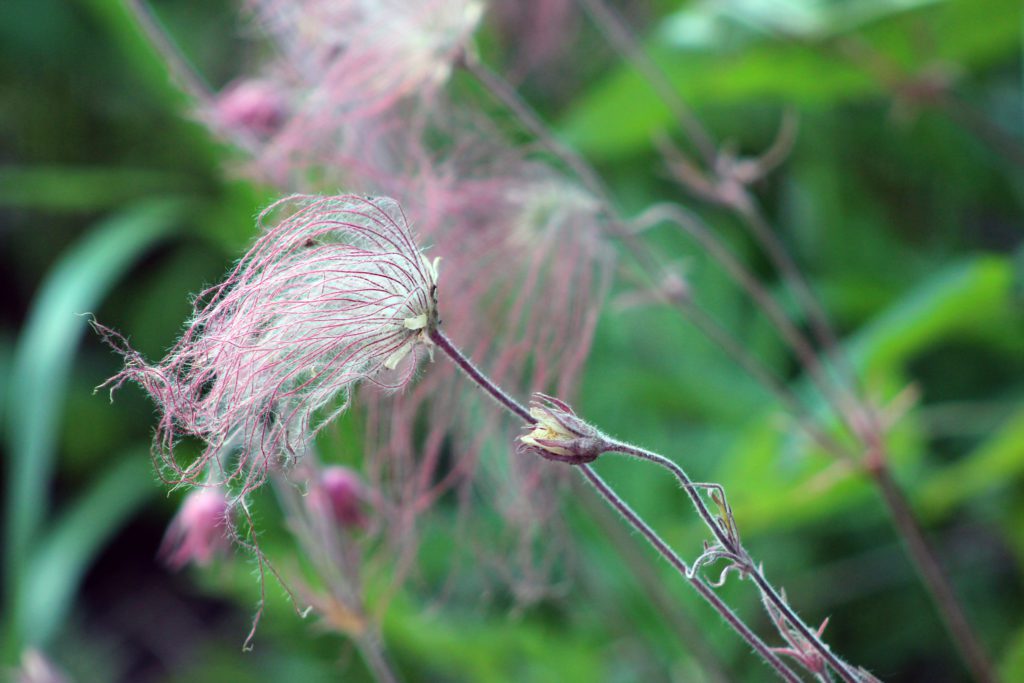
Range: Native to much of North America, mostly sticking to prairies, alvars, meadows, and open woods.
Season: 3-5 rosy blooms bring blushing buds to your garden, nodding in the winds from March or April to early summer.
Type: This perennial prairie wildflower is semi-evergreen, retaining some leaves that turn reddish-purple after frost.
Sun: Prefers full sun, tolerates light shade.
Soil: Prefers drier, well-drained, soils; tolerates drought.
Symbionts: Adapted to buzz-pollination/sonication by native bumblebees, like tomato, potato, and aubergine plants. Deer-resistant.
Uses: Some First Nations used its roots to make a sassafras-like herbal tea.
Fun Facts: After pollination, flowers turn upwards and reveal feathery smoke-like filaments that remain a fiery haze during the summer. It is intolerant of both excessively hot summers and wet winter soil. Leaves reminiscent of ferns.
Learn more about building your own rain garden with our RAIN Garden Master Class.
False Blue Indigo (Rattlebush)
Baptisia australis
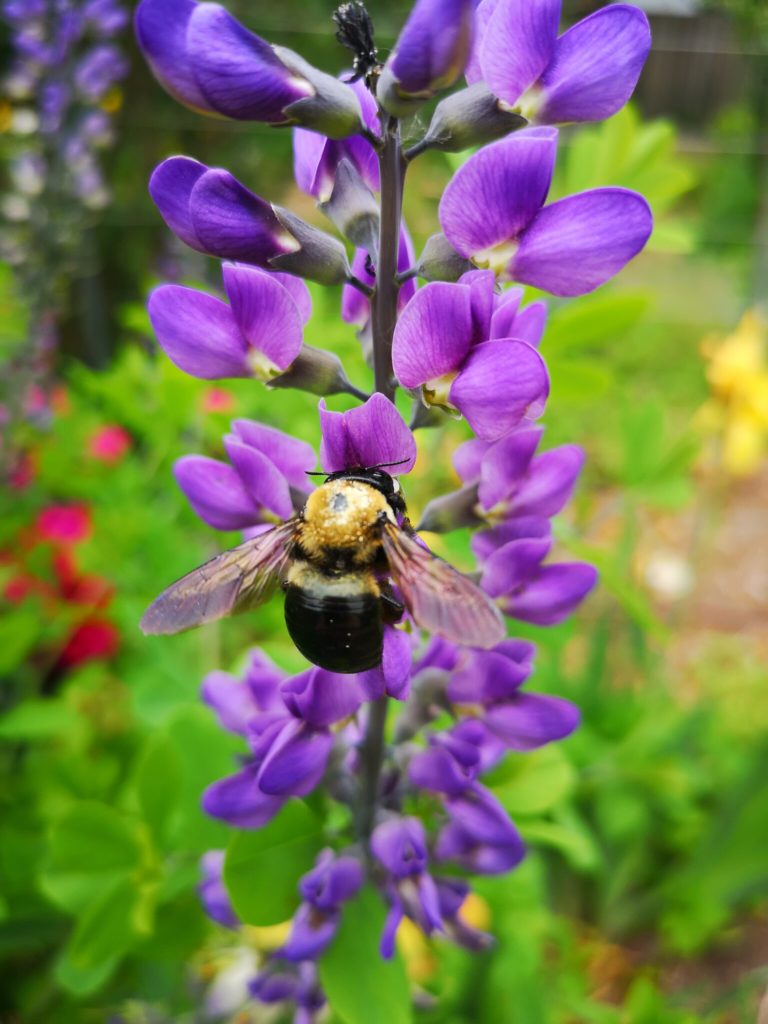
Range: Native to prairies and moist open woodlands of central and eastern North America.
Season: Violet or blue blossoms in late spring (May-June).
Type: Dense leguminous perennial.
Sun: Prospers in full sun.
Soil: Enjoys moist acidic soil but tolerates drought and minor seasonal flooding.
Symbionts: Toxic and inedible to humans.
Uses: Good for garden borders.
Fun Facts: Dried pods were used as rattling toys for young children in Iroquoian and Siouan cultures, giving it its other common name. Other parts of the plant were used medicinally and as a blue dye before the rise of the indigo plant (Indigofera tinctoria).
Woodland Phlox
Phlox divaricata
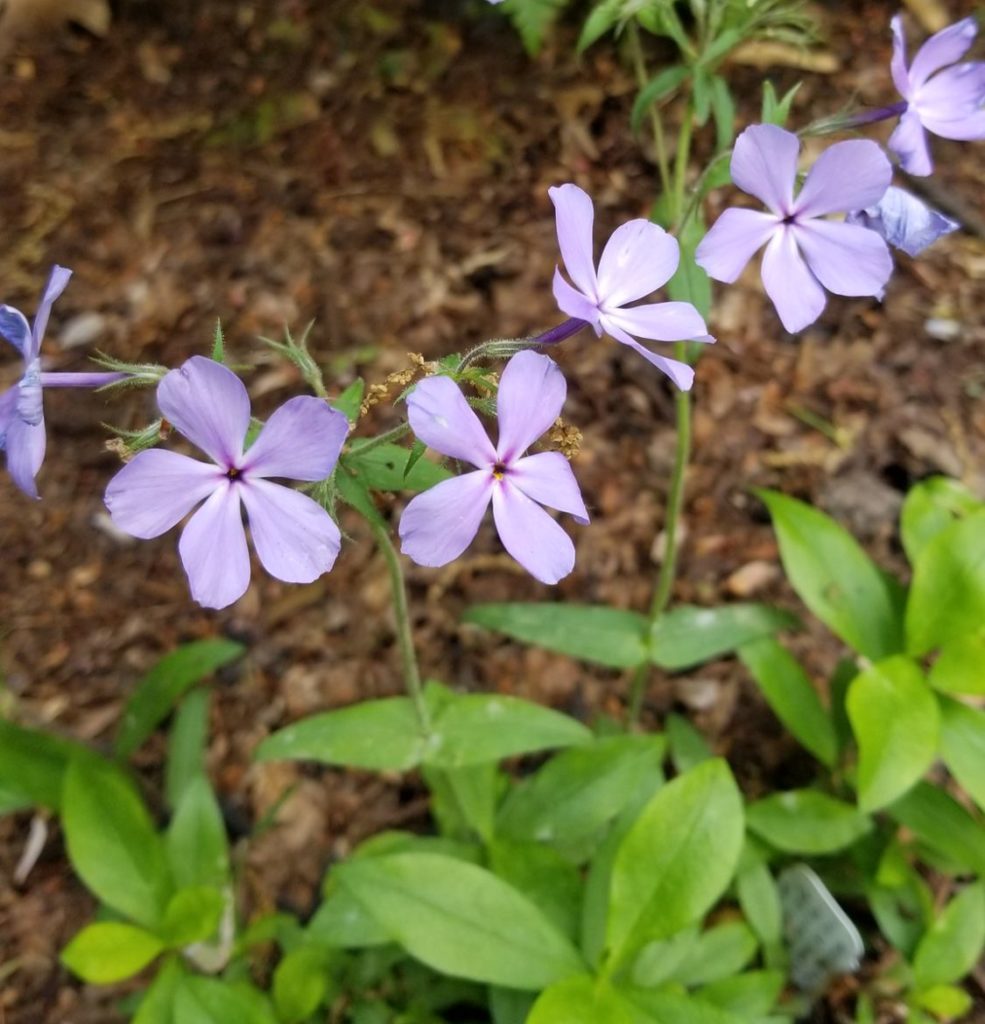
Range: Native to deciduous woodlands and seasonal floodplains of eastern North America.
Season: Fragrant pale purple, pink, or blue blossoms in April and May.
Type: This perennial grows to about 18-inches tall and wide and likes a bit of breathing room around it.
Sun: Flourishes in bright dappled shade but can tolerate part sun.
Soil: Prefers moist soil but can tolerate drought and heat. Tolerates claggy, sandy, or loamy; acidic, neutral, or alkaline soils.
Symbionts: Pollinated by butterflies and is a valuable source of early-season nectar. Deer-resistant, but rabbits enjoy nibbling on it.
Uses: Used as a groundcover—good substitute for the invasive non-native periwinkle (Vinca major, V. minor).
Fun Facts: Can be planted with black walnut (Juglans nigra), which it co-evolved with, a tree that chemically supresses the growth of other plants around it through a biological phenomenon known as ‘allelopathy’.
Wild Columbine (Red Columbine)
Aquilegia canadensis
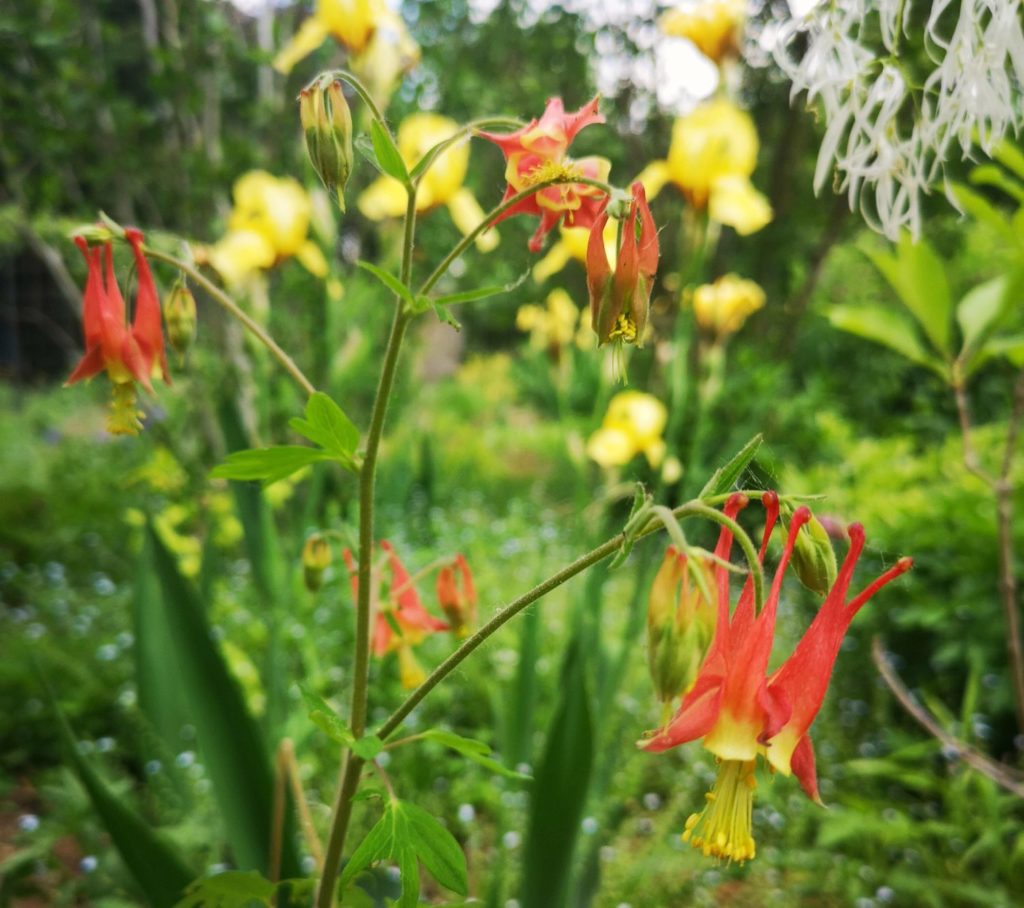
Range: Native to North America, east of the Rockies.
Season: Eccentric red-orange and yellow flowers with floral spurs blossom in April and May.
Type: An elegant perennial that is short-lived but will re-seed itself like some annuals.
Sun: Prefers partial shade but can adapt to full sun or shade.
Soil: Prefers moist soil with a neutral pH but tolerates drought and alkalinity.
Symbionts: Deer and leaf-miner resistant. Attracts hummingbirds and hawkmoths with their deeply hooded nodding sepals that each contain a nectary. Hosts caterpillars of the Columbine Duskywing (Erynnis lucillius).
Uses: A good candidate for shade-gardening.
Fun Facts: Its cousin, also called Red Columbine (A. formosa), is native to the west coast and its nectar was eaten as a candy by the Gitxsan and Wet’suwet’en. Their cousin, the naturalised Common Columbine (A. vulgaris), is native to Europe and is widely cultivated. Intolerant of excessive heat. Leaves are reminiscent of the Delta Maidenhair Fern (Adiantum raddianum). Known to be used medicinally but shows toxicity in higher amounts.
Marsh Marigold (Kingcup)
Caltha palustris
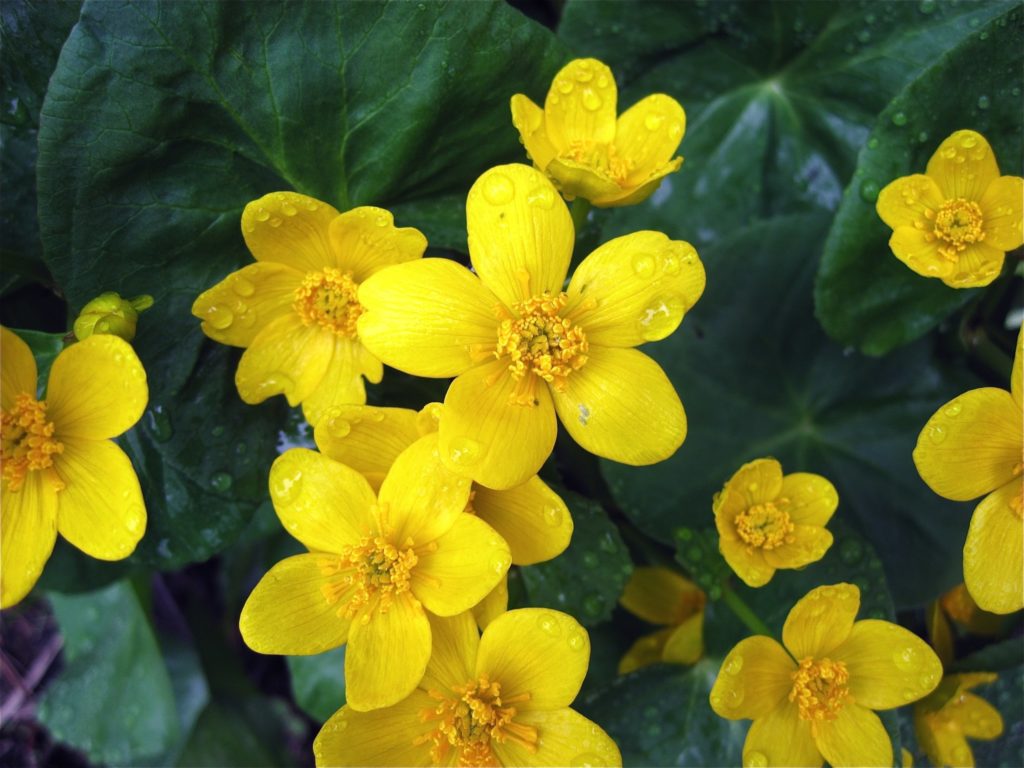
Range: Native to temperate ditches, marshes, and wet woodlands of the northern hemisphere.
Season: Buttery yellow cup-shaped blooms blossom in April and can last until August.
Type: Perennial, herbaceous.
Sun: Prefers full sun, tolerates partial sun.
Soil: Prefers wet acidic soil but tolerates flooding and alkalinity.
Symbionts: Attracts pollinators with nectar and a glut of pollen. Deer and rabbit resistant.
Uses: Buds can be boiled and pickled as a substitute for capers.
Fun Facts: Can tolerate some drought but will go dormant. Toxic when raw and in large quantities. Also come in white and magenta varieties.
Western Sword Fern
Polystichum munitum
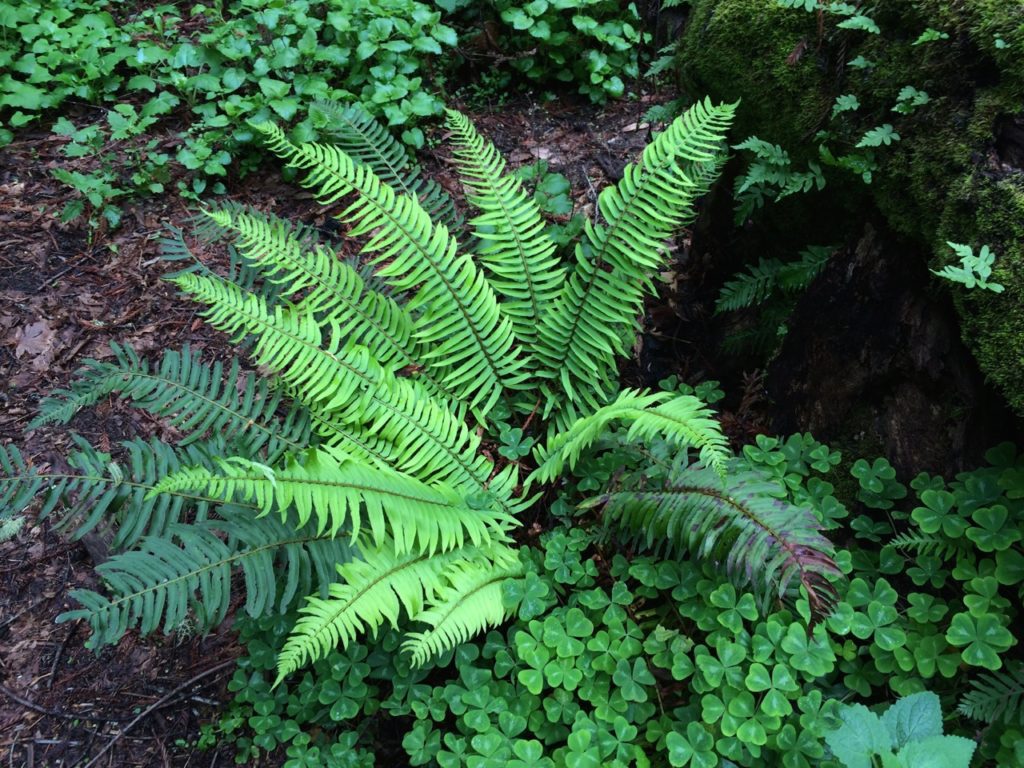
Range: A native to western North America.
Season: Four seasons of interest!
Type: Evergreen fern.
Sun: Grows best in cool shade or part-shade.
Soil: Thrives in moist but well-drained acidic soils, typically associated with coniferous forests.
Symbionts: Resistant to deer and rabbits.
Uses: Good for erosion-control and as a groundcover. Great for beds and borders.
Fun Facts: Its fronds elegantly arch up like the streams of light from a green firework, even in winter. Fronds are a good addition to floral arrangements for contrast and texture. Leaves are traditionally used for pain-relief and rhizomes were roasted and peeled as an early spring food. Survives occasional droughts.
Deer Fern
Struthiopteris spicant / Blechnum spicant (syn.)
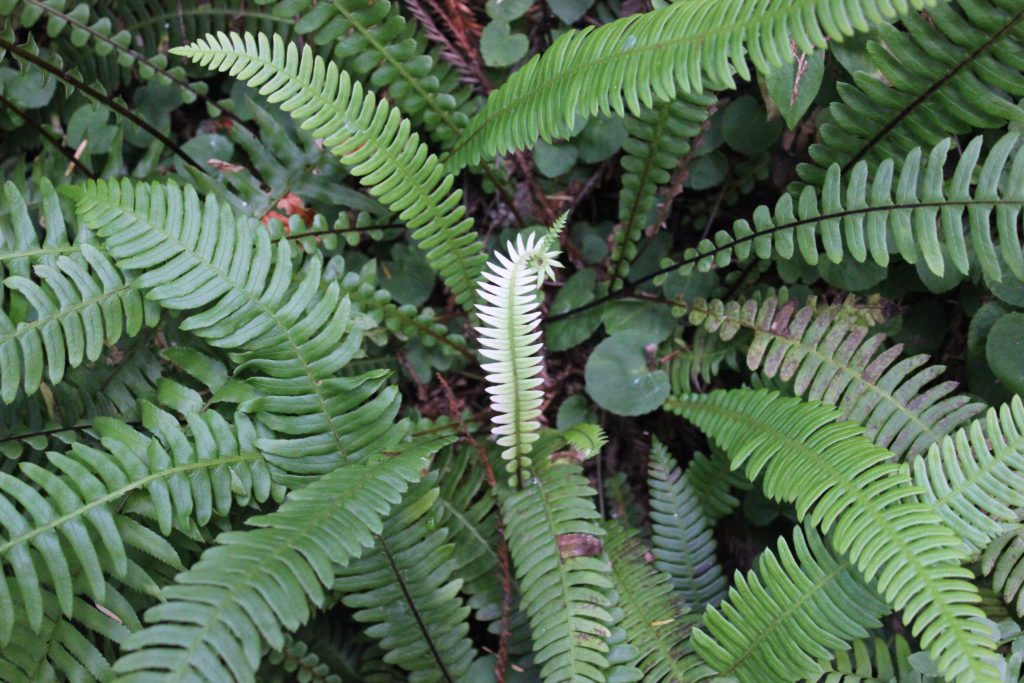
Range: The deer fern is native to regions west of the Rockies (from Alaska down to California).
Season: Four seasons of interest!
Type: Evergreen fern.
Sun: Grows best in cool shade or part-shade.
Soil: Grows well in the rich, moist, and acidic soil often found under conifers.
Symbionts: Provides year-round cover for native birds and arthropods.
Uses: Great as a groundcover.
Fun Facts:
An awesome replacement for the non-native invasive English Ivy (Hedera helix). Leaves contain appetite-suppressing compounds.
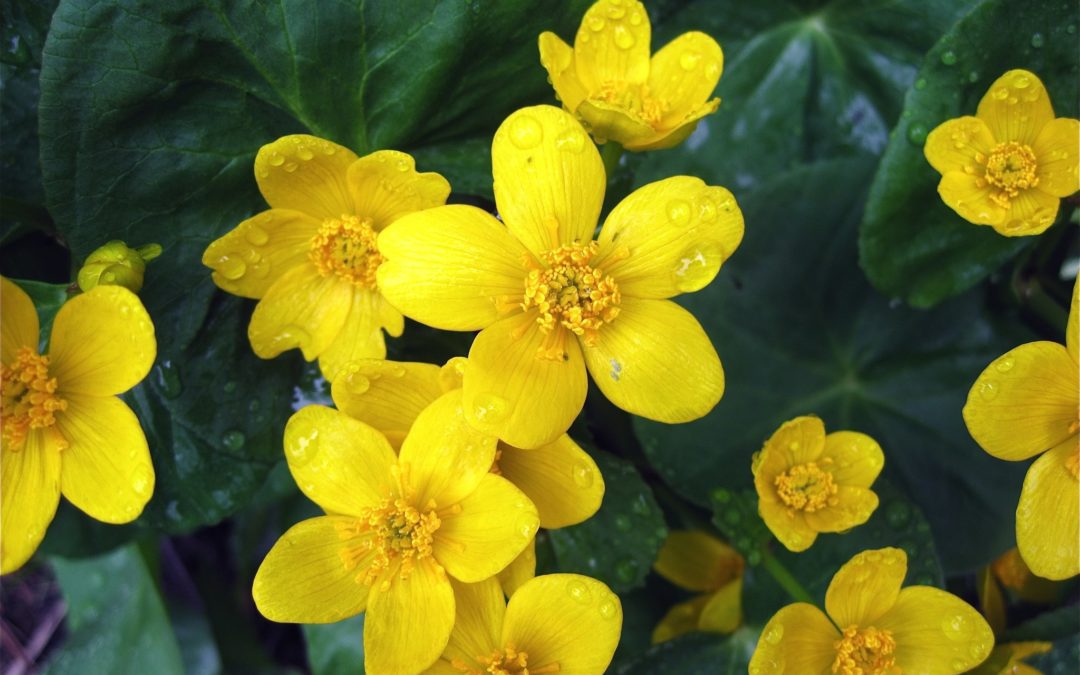
Trackbacks/Pingbacks